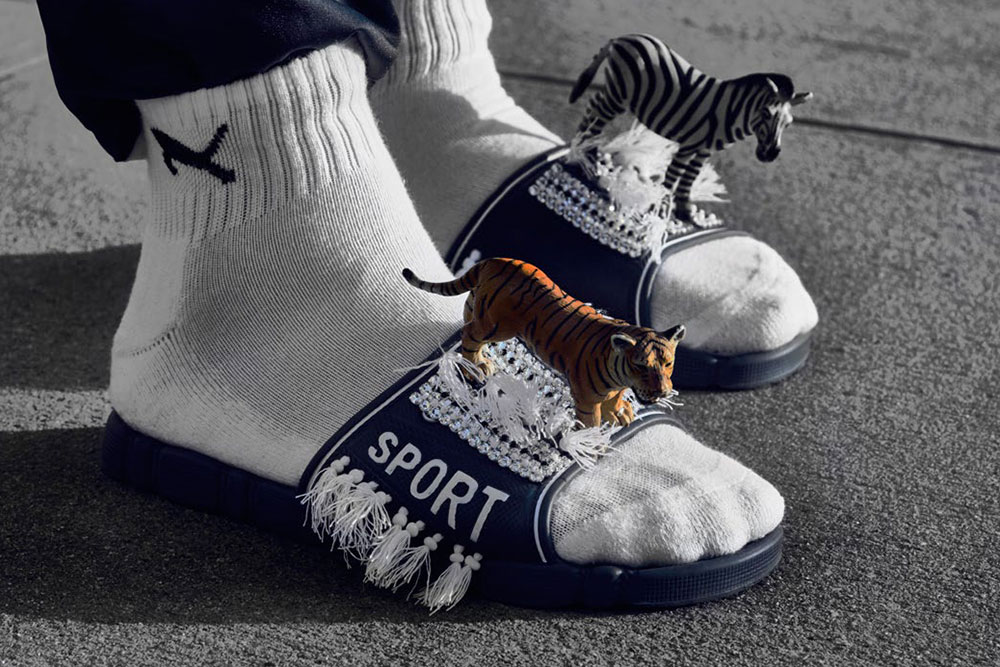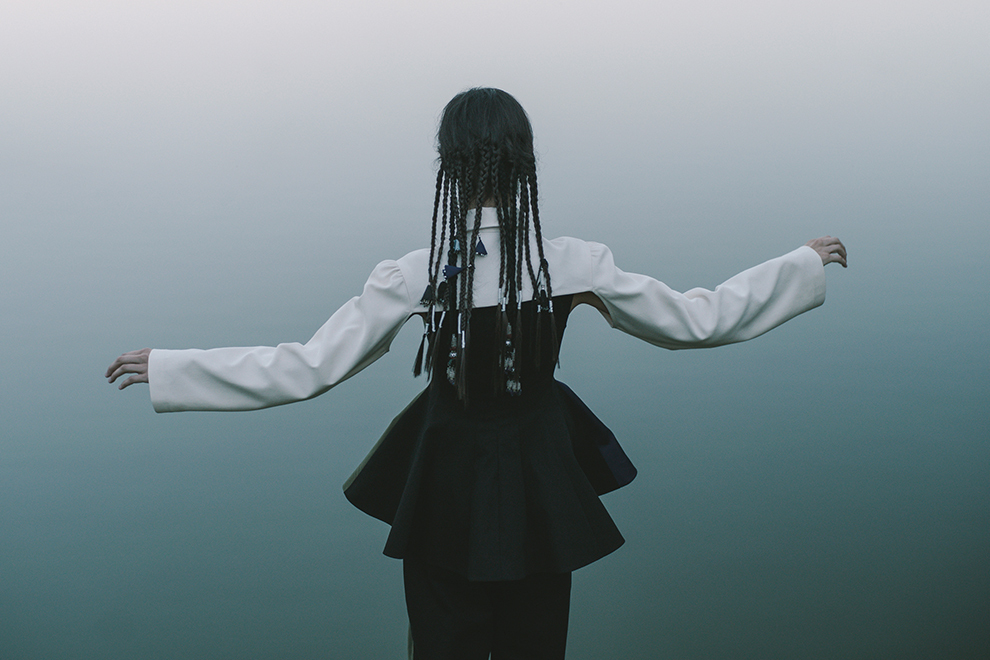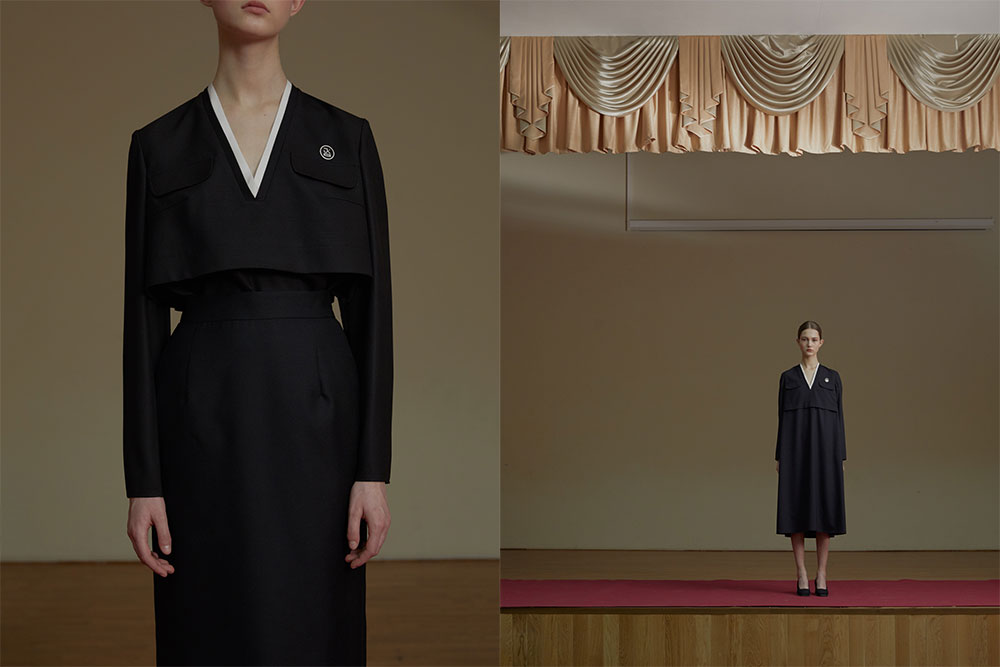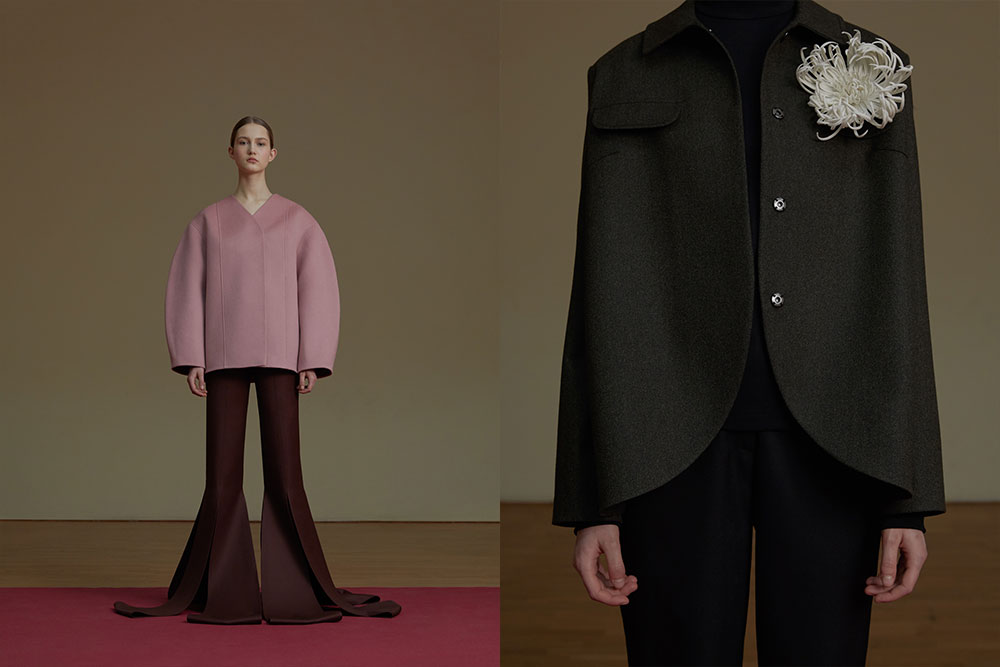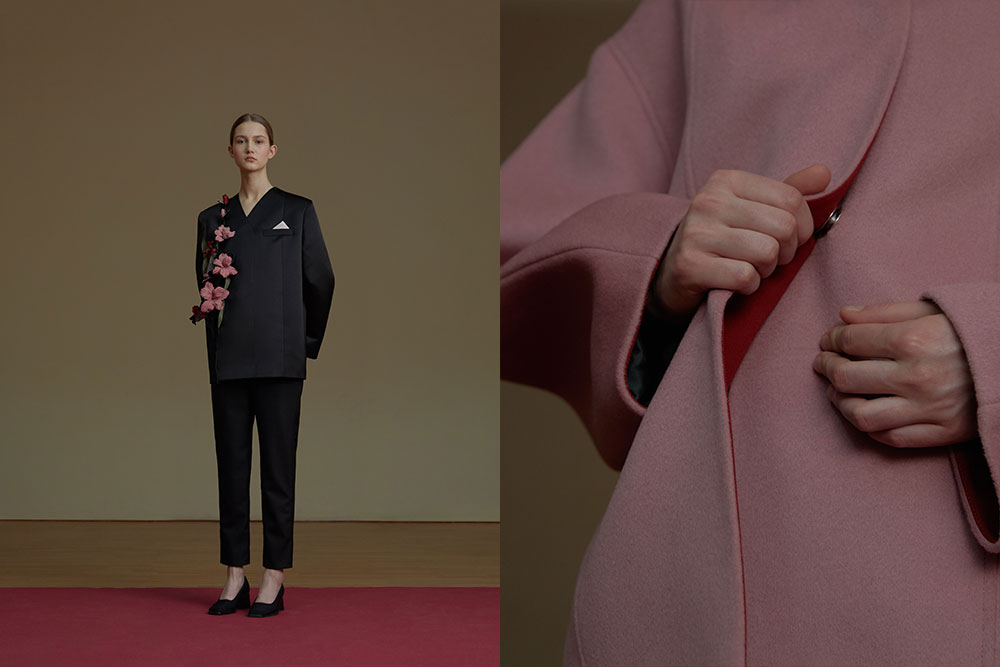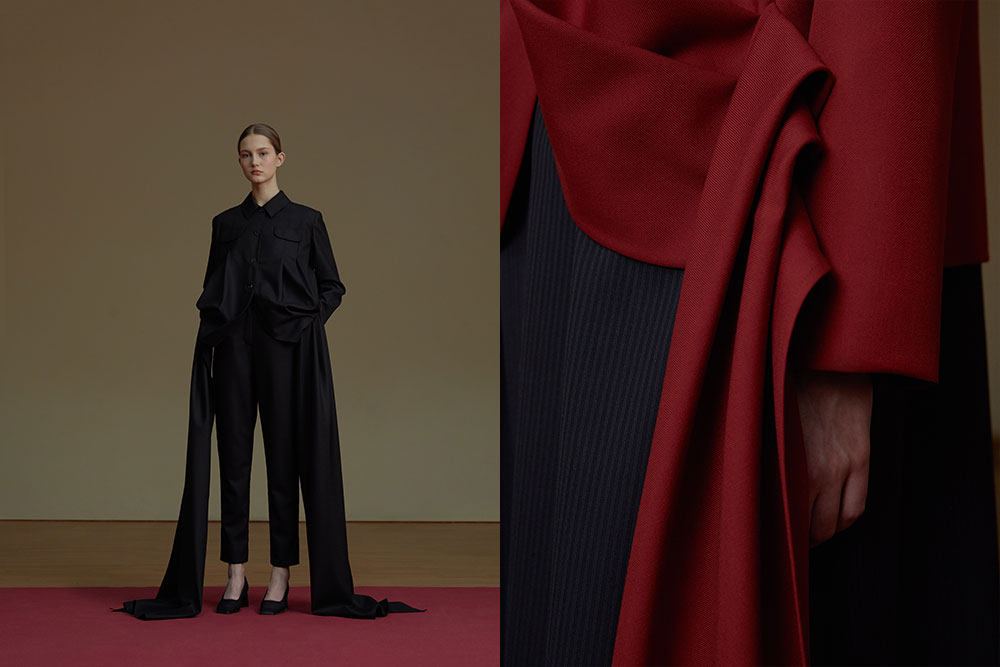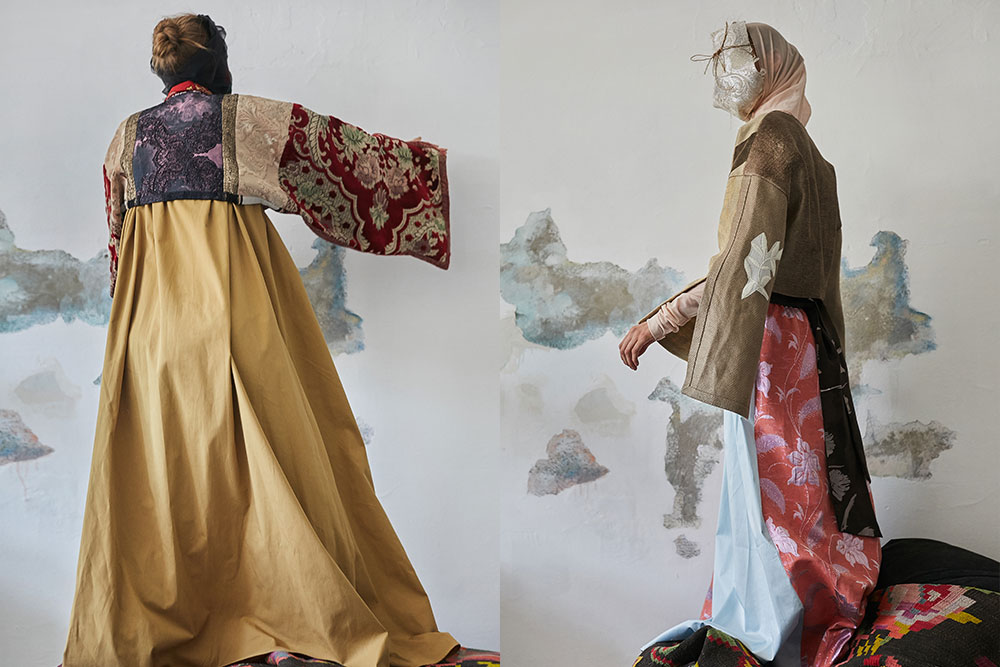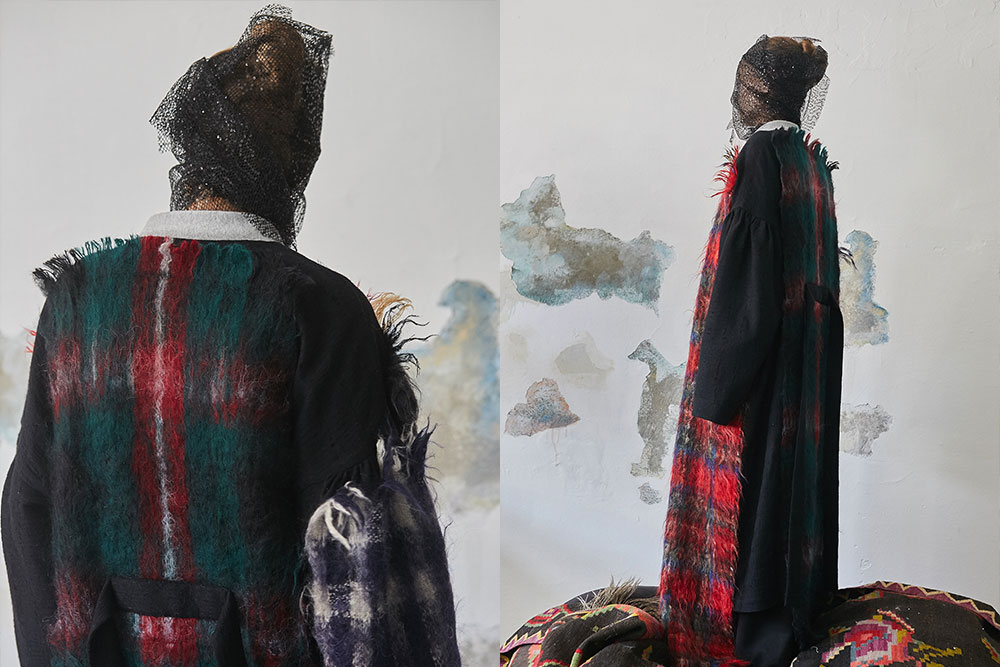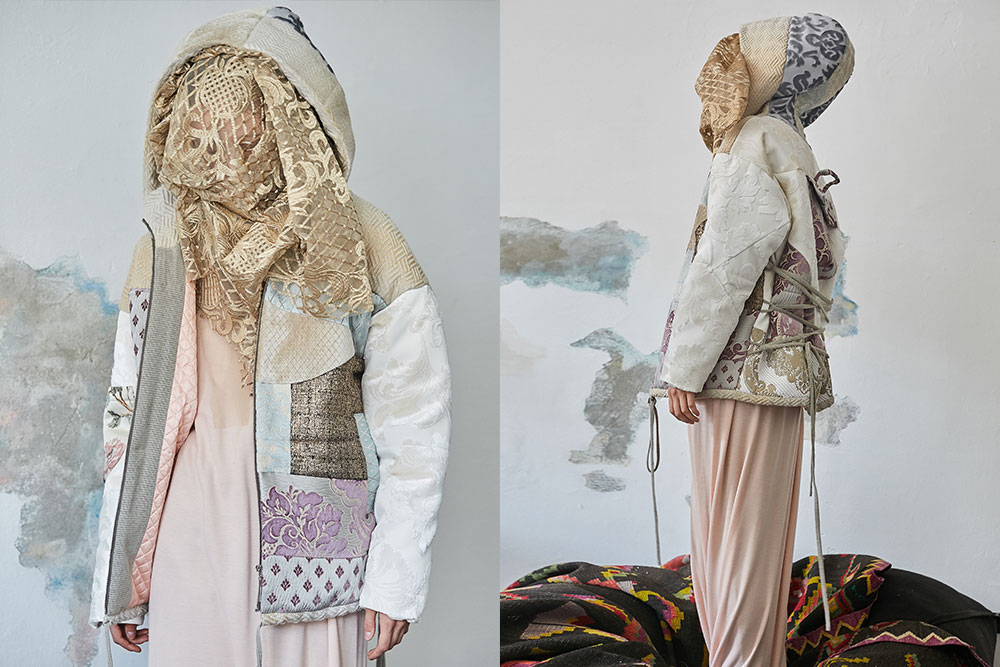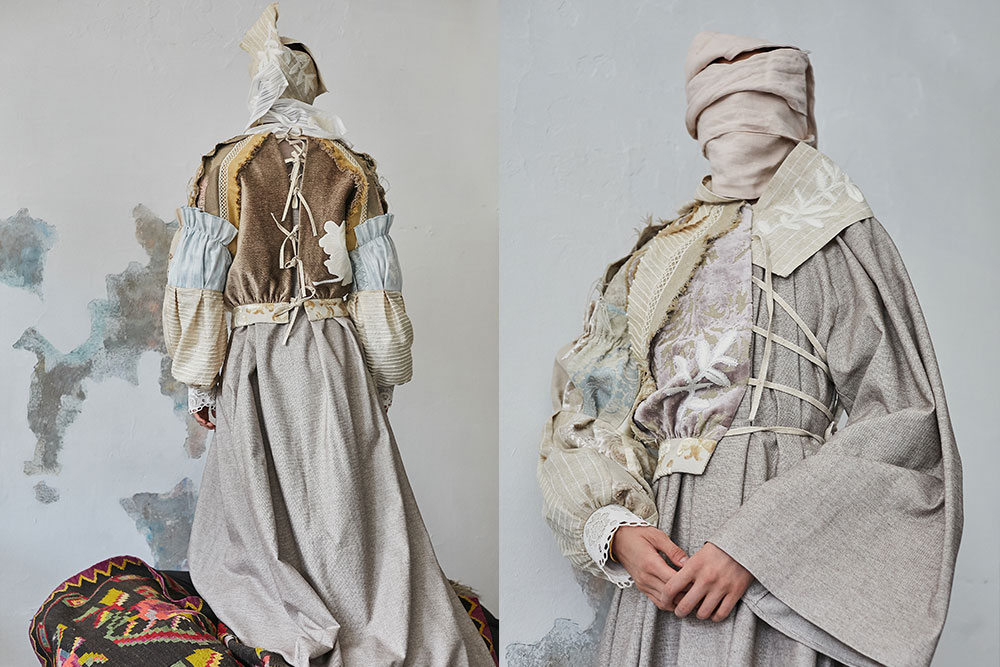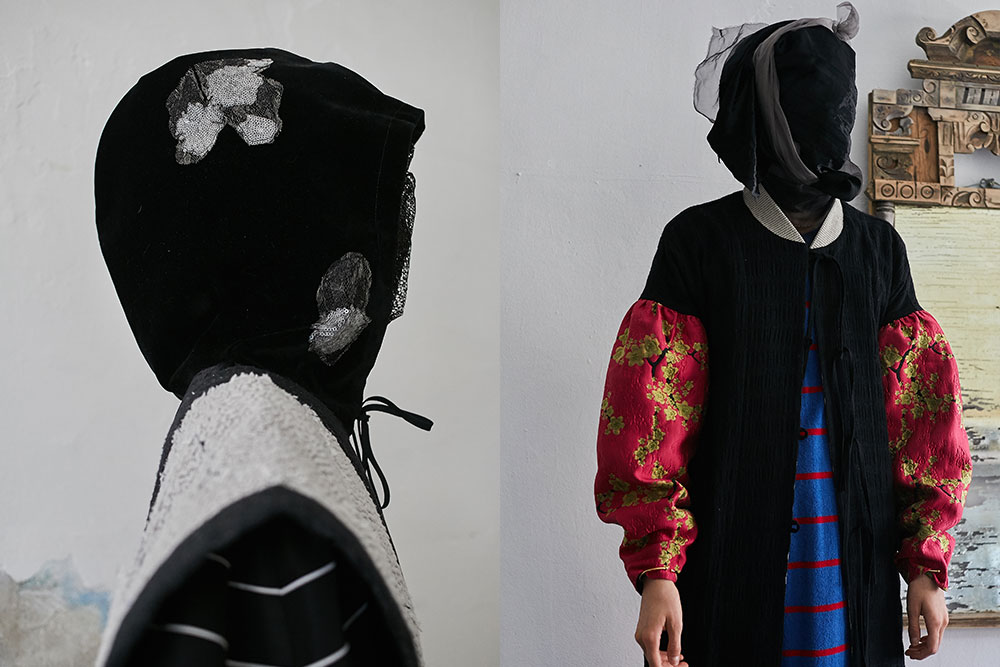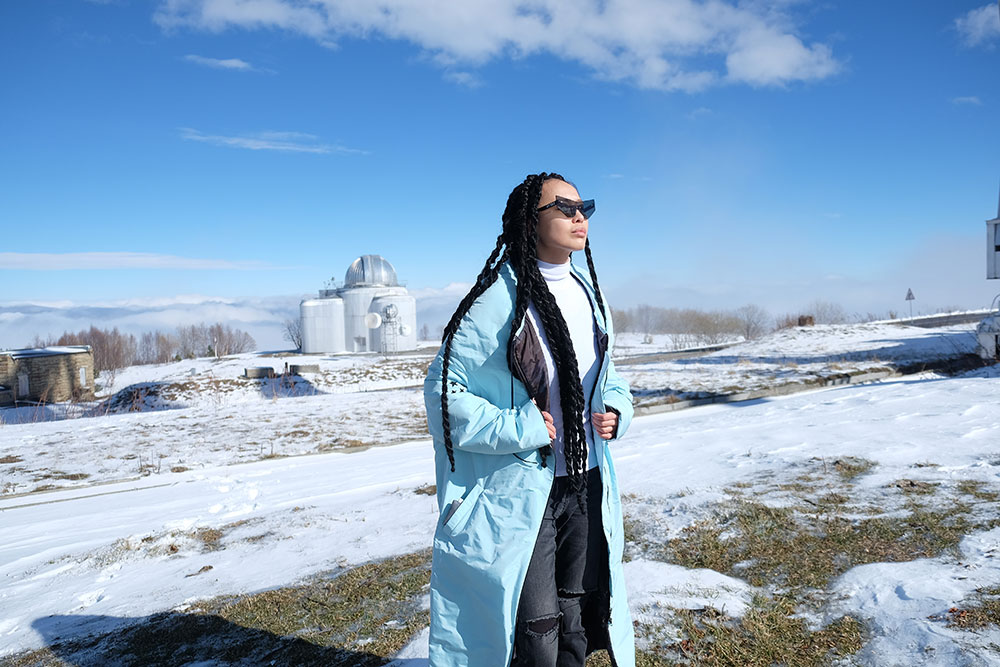Fashion without borders: these Russian brands are representing the true diversity of their culture
There’s no denying that nationality is a brand in today’s fashion world. Despite the fact that our tastes in clothes are becoming increasingly homogenised, there are still cultural tropes young fashion designers — whether from the UK, eastern Europe or Asia — tend to follow. This is one of the reasons why the work of Maria Kazakova, this year’s Russian finalist for the influential LVMH Prize, comes as such a surprise. Kazakova’s label Jahnkoy is based in New York, and radiates the powerful celebratory energy of a new multiculturalism — a sign that the times, in fashion and beyond, are truly changing.
Kazakova’s work is an intricate patchwork of influences: crystals, soda cans, feathers, Russian red and white embroidery, the bold shapes of Constructivist slogans
The cryptic title Jahnkoy stands for “New Spirit Village”. Spawned at Parsons School of Design, where Kazakova showed her first collection in 2016, it’s no accident that the brand doesn’t bear its founders name — from the outset its ethos and goals have been less to do with individual recognition and more to do with uniting people and transcending the world’s borders. As Kazakova told Vogue Italia, the lion on the logo and the word Jahnkoy stands for “the transformation to the new world order of Higher Consciousness. It helps people realise their inner strength and act according to the betterment of the whole. Once we realise that the divine Spirit is the True Self we consciously become one with humanity.”
Jahnkoy is clearly about connection and the collective — collective creativity, collective action and collective responsibility. The most recent collection, titled The Displaced draws on fast fashion and its catastrophic effects — “the donations of Western clothes to the African continent, and the way it brings destruction to artisanal crafts, tradition and culture”. It’s charged with the much-needed knowledge that the purchase of a $10 dress in one corner of the world could lead to environmental and cultural crisis in a community thousand miles away. Hence, we’re all in this together.
Kazakova’s work is an intricate patchwork of influences, references and material artefacts: reworked sportswear, crystals, plastic bags, soda cans, feathers, little bits from bodega stores, Russian red and white embroidery ornaments, the bold shapes of Constructivist slogans. It looks eclectic, as if stripped of any sense of belonging. What kind of creative license could a rootless artist have, you might ask. The approach, however, has its foundation in both Kazakova’s travels and her background. Originally from Siberia, Kazakova was influenced by her parents: her mother ran a fashion label, and her father crafted masks from wood, made knifes and built houses. The shapes of the masks echoed the different cultures intertwined in Siberia, each with their own beliefs and religions, mystical artefacts and costumes. This influenced Kazakova’s own spiritual and artistic exploration beyond Russia.
In recent years, the rise of Russian fashion has become synonymous with a certain look: boys with buzzcuts showing off 1990s-style sportswear and pale lost youths in tower block estates. The so-called post-Soviet trend often means urban, working-class and white. There are two reasons why it sells globally: it talks to youth in almost any big city in Europe, and, at the same time, it subtly reinforces the existing stereotypes surrounding eastern Europe. In Russia, this image coincides with the idea of Russia as a white, Orthodox country — but this vision, so beloved by the authorities, couldn’t be further from the truth. Challenging this stereotype, a new wave of Russian fashion designers is keen to represent the true diversity of their culture.
Asiya Bareeva is known for her intricate craftsmanship and her role in shifting the perception of Islam in fashion
J.Kim, one of the most celebrated emerging brands on the Moscow fashion scene, is a model example of refined work with diverse national heritage. Jenia Kim, the label’s founder and designer, comes from a family of Korean emigrants from Uzbekistan, and was raised in the city of Tashkent before moving to Moscow to study. National influences are ingrained in the core of the brand: it’s more about the cut, the essence and the reinvention, rather than just decorative ornaments. “The influences from Korean and Uzbek culture are crucial to my work, they’re always at the foundation of the collections. I’ve worked with it in a number of different way: in the latest Fall/Winter collection there are a lot of recognisable cuts from national Korean costume, in Spring/Summer ‘17 the fabric in a pair of trousers references the colour of Uzbekistan flag, and once the whole collection consisted throughout from various transformed variations of the Hanbok, the traditional Korean dress,” Kim explains.
Also based in Moscow, Asiya Bareeva is known for her state-of-the-art patchwork garments and intricate craftsmanship, and her role in shifting the perception of Islam in the creative community and fashion. Muslim herself, Bareeva is vocal about the deep meaning of religion in her life and artistic practice. She previously created unique, excessively patterned garments which were more like art pieces, but her future plan is designing simple and good quality garments according to Sharia law.
Outlaw Moscow, a young label known for its global-minded ethos, is also pushing the borders of what it means to be Russian. For their Outlaw Film 2, supported by SHOWstudio, they travelled far beyond Moscow: to Tatarstan to film mosques, and Arkhyz in the Caucasus for its stunning mountain landscapes. Their layered style, consisting of voluminous coats and streetwear pieces, is the uniform for a new breed of nomads — respectful of their complex heritage yet ready for the future.
True multiculturalism, in a way, is just about that. As in the case of Jahnkoy, it’s not really about the place where you come from but about the emerging global nation where we all belong — with our hearts, minds and actions.
Text: Anastasiia Fedorova
Top image: Still from The Displaced film by Jahnkoy
-52.jpg)
-47.jpg)
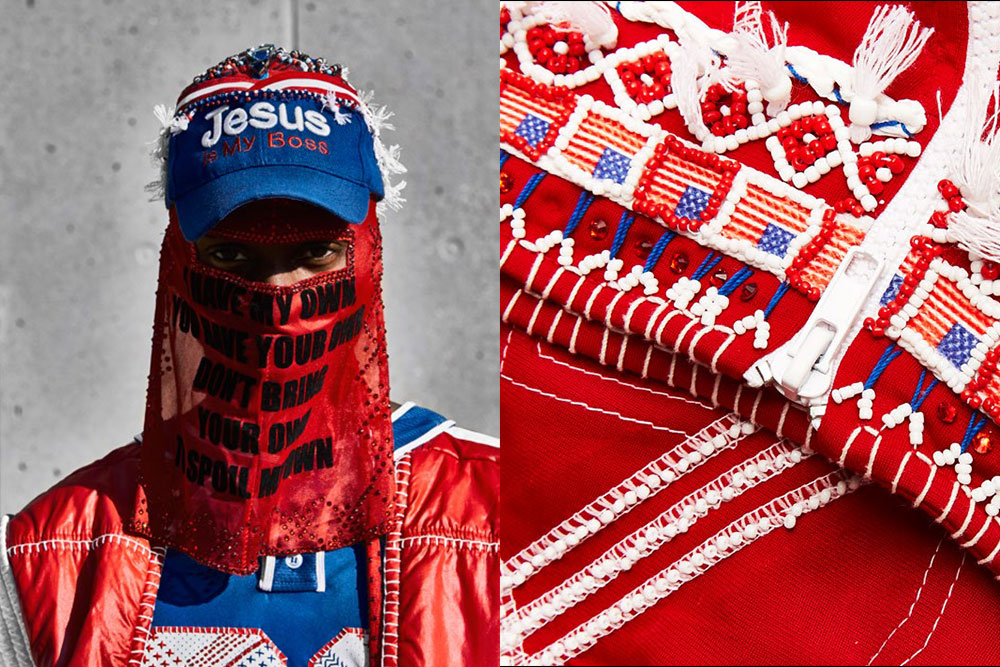
-53.jpg)
-7.jpg)
-10.jpg)
-4.jpg)
-43.jpg)
